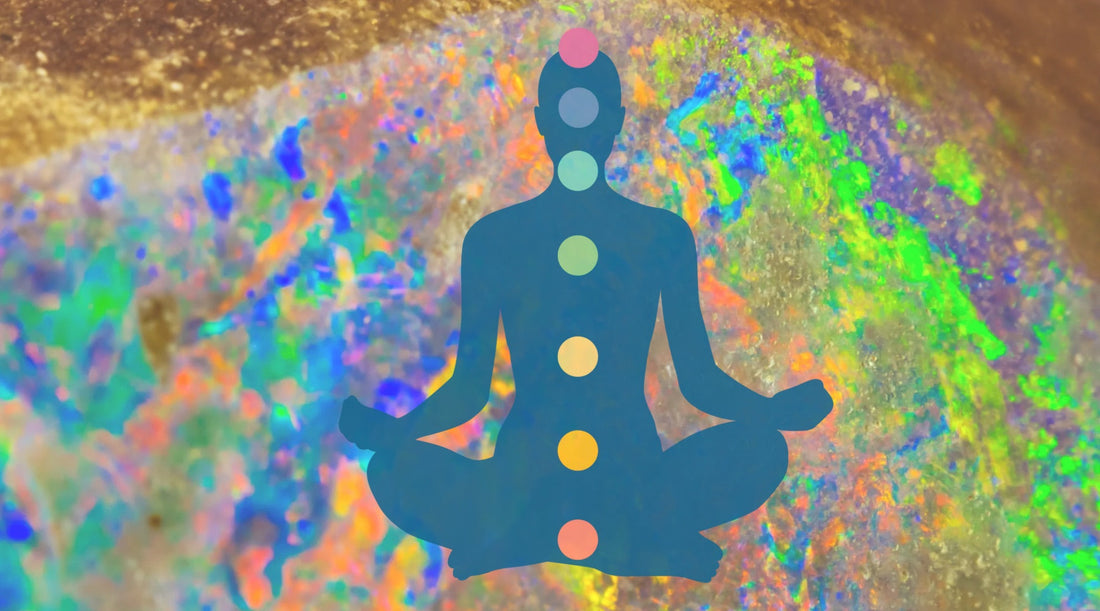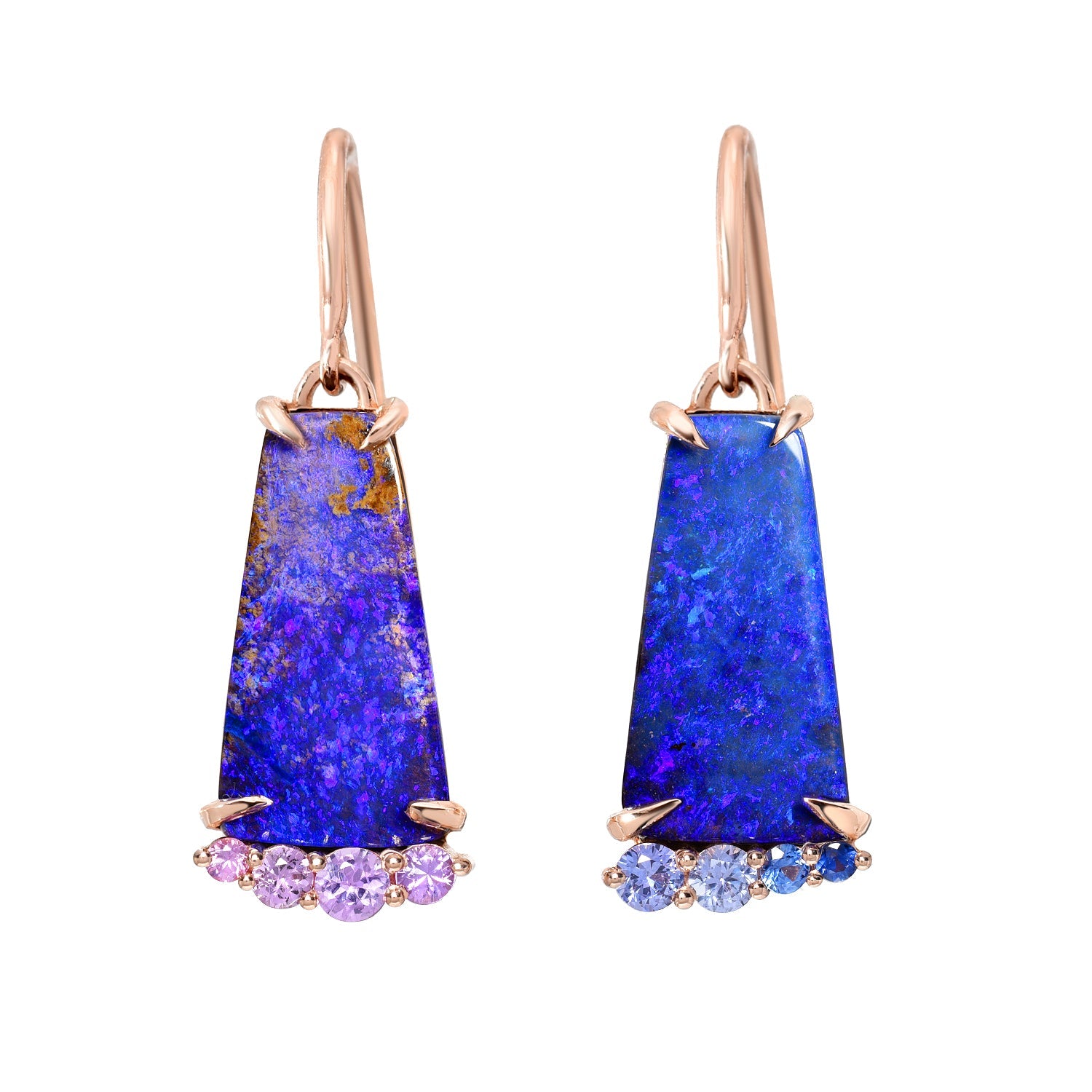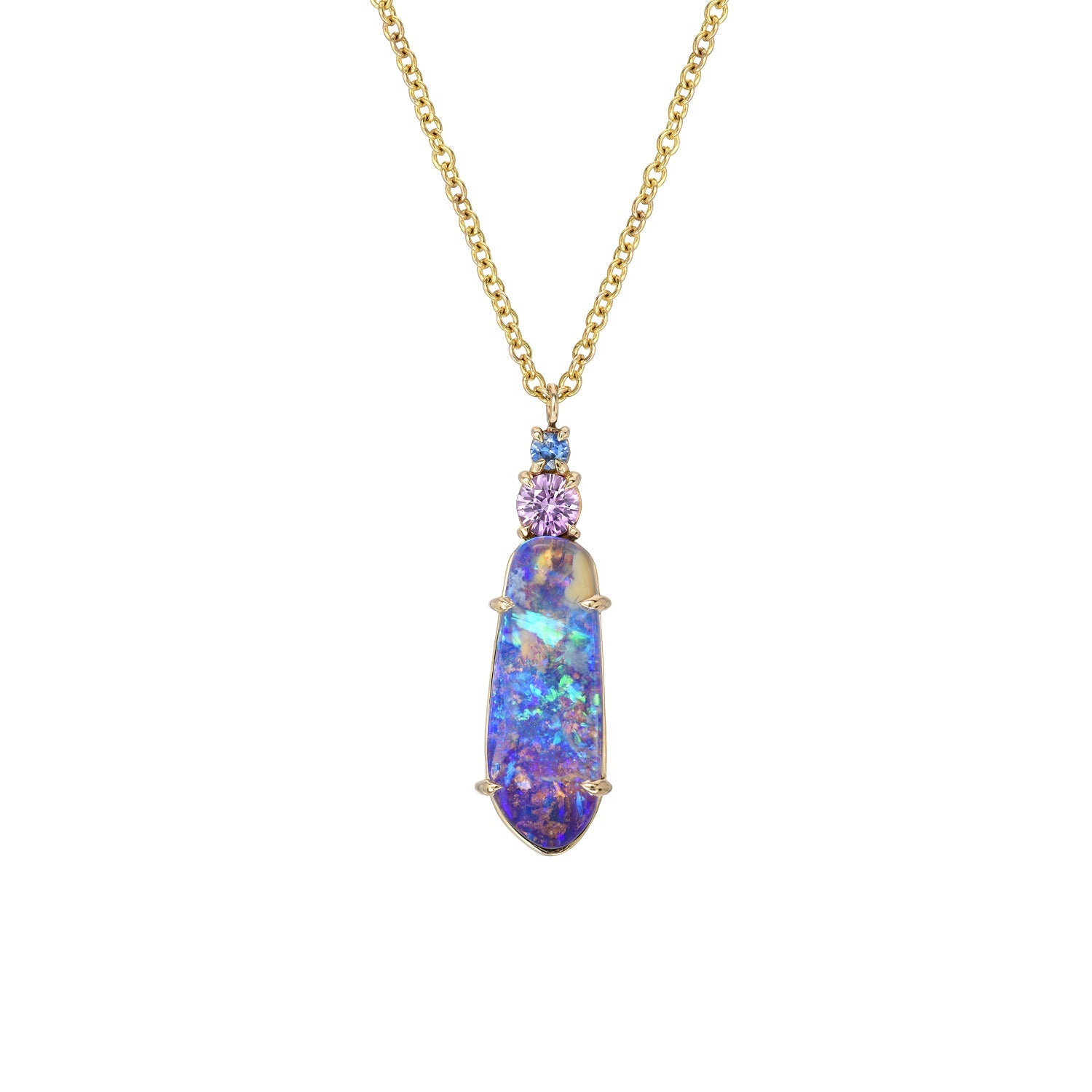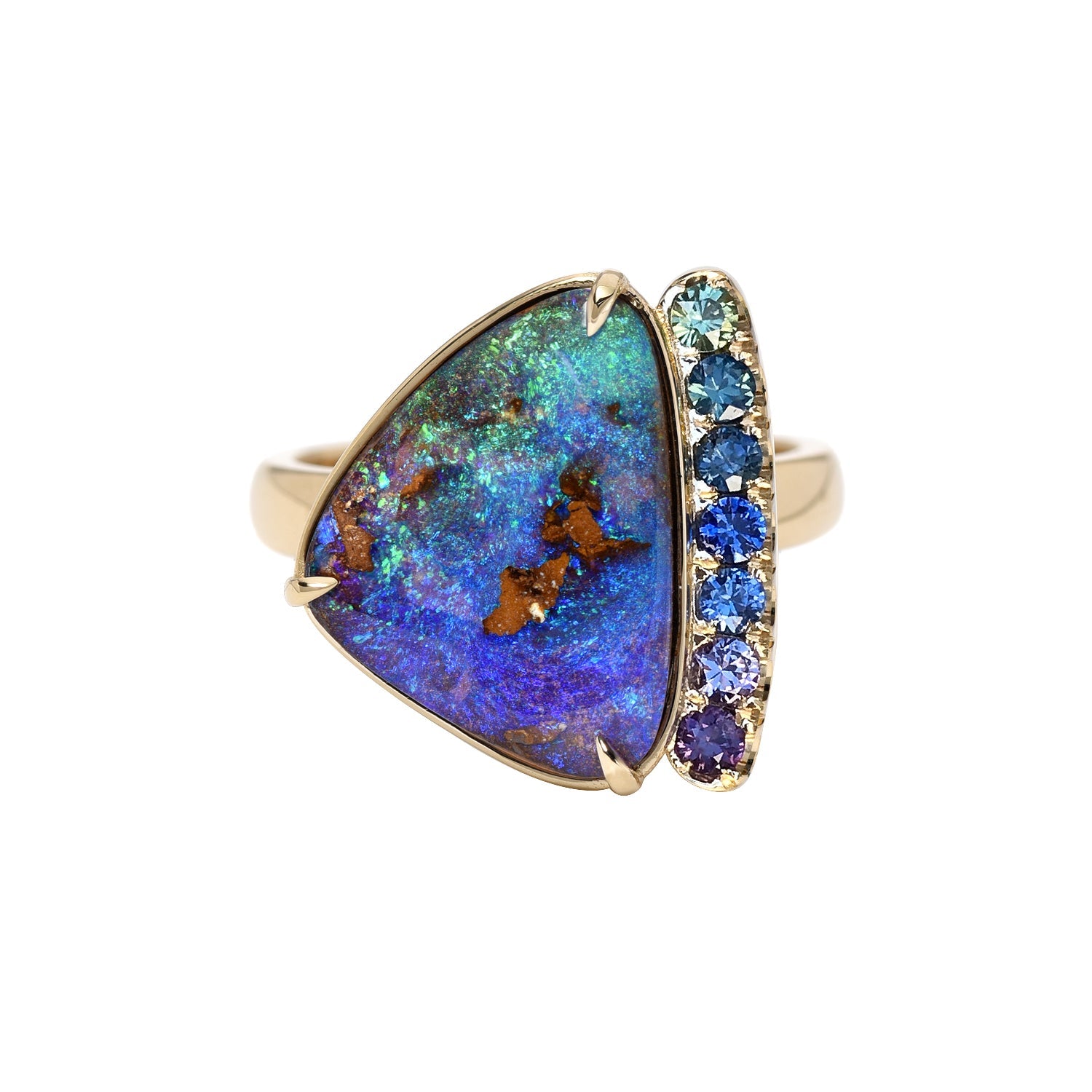
Opal and Chakras - A look at the New Age phenomenon
luis gomezShare
Disclaimer: Before we dive headlong into the relationship between opals and chakra points it’s important to highlight a couple of notes— crystallography, also known as the science of crystals, and chakra points are what is commonly referred to as pseudo-science or fringe science. In essence, it means that it is based on beliefs, traditions and spirituality, not - and pardon the pun - stone-cold facts.
Opals have had a somewhat vertiginous relationship with everything related to spirituality. A relationship that has seen a hike during the past few years mainly due to the New Age movement. Why is that? What makes them so unique? Why do they attract such an open-minded subset? Why are they so alluring? Well, stick around and get ready as we explore the thaumaturgical nature of opals and their power over chakra points.
The allure and seductive nature of opals?
Opals have always been exotic gems — in antiquity, they were far more valuable and fascinating than diamonds and rubies. To what extent? To the point that many ancient cultures thought they were out of this world. Rocks or stones that came crashing down from the heavens. Everything about them is unique and incredibly attractive.
- Their crystalline structure is unlike any other on the planet.
- They are composed of millions of tiny spheres smashed together into an amorphous mass.
- Only a few places on the globe have them.
- They have inspired, due to their kaleidoscopic nature and colors, new words and terms to describe their beauty: opalescent, opaline, iridescent, play-of-color, etc.
- You can find them in just about every color imaginable — a rainbow of possibilities.
- They are composed of up to 20% water; something distinct among gems.
- They have been central to all manner of myths, stories, and magical traditions.
- 95% of the world’s opal is mined in Australia. The rest can be found in Ethiopia, Brazil, and Mexico, with some deposits found in North America.
- Finally, it is one of a handful of gemstones that can be found outside of our planet. Where? On Mars!
- Ancient Romans thought it was a symbol of hope and good fortune, to the point that it was often called the Queen of Gemstones.

A passion for Opal
What ultimately makes Opal such an attractive and oftentimes seductive gemstone is its unsettling and oftentimes mysterious nature. Opal’s true beauty lies in its mystique. In its bizarre play of color and 3D trap of prismatic flashes. When you look deeply into an opal gemstone you can get lost and trapped within its multifaceted and colorful core.
This quality, this bizarre characteristic is why it is such a coveted stone in crystallography, why it is such a sought-after tool in the area of color therapy and spiritual healing. From uplifting swatches of yellow and orange to calming blues, all the way to savage erotic reds, each stone can display a different hue and each hue seems alive, hinting at its magical and emotional influence.
Opals and your Chakras
What exactly are Chakras?
According to ancient Hindu beliefs, which have been adopted by modern philosophies and New Age dogmas, chakras are various focal points in our bodies, energy lines, that are used in a variety of meditation practices — what is commonly referred to as tantra.
The concept of Chakras can be traced to ancient Hindu texts, and beliefs or how they perform differ from region to region. For example, Hindus believe that there are six to seven chakras, while Buddhists only accept five.
Today, in esoteric practices, New Age philosophy and Western beliefs, what we know as chakras is a bastardized amalgamation of different traditions and philosophies. A confluence of “unintentional collaboration” between many groups of people. From Indilogist to scholars, and myth builders like Joseph Campbell, to psychological interpretations by Carl Jung, to color systems created by Charles W. Leadbeater, to modern healers and yogis like Barbara Brennan.
The reality is that today, what we denote as chakra points is really a rainbow collection created after intensive back and forth, and editing, and re editing by all manner of psychologists, esotericists, yogis, gurus, and clairvoyants on the planet. And even now they still differ in their understanding of it. Many attribute extra layers to them, layers created by your aura, your developmental stages, your associated disease, your state of conscience, your history.
Why do we make this distinction? Just so you understand that each book, each teacher, has their own idea of what chakras are.
The seven chakras
With that said, today’s modern beliefs hold fast to the idea that our body contains seven sacred points that are influenced by energies. These seven points, the chakras, regulate our physical and mental well-being. They go from the base of the spine to the top of our head.
- Muladhara: Root Chakra.
- Svadhisthana: Sacral Chakra.
- Manipura: Solar Plexus Chakra.
- Anahata: Heart Chakra.
- Vishuddha: Throat Chakra.
- Anja: Third Eye Chakra.
- Sahasrara: Crown Chakra.
Each one of these chakra points manages, regulates, and influences a branch of your well-being. From our sexual prowess, all the way to our mental acuity and our ability to associate with the spiritual — with the unforeseen, with the metaphysical.
The color of Opal
Here’s where opal shines. Each one of these points, these energy doorways have a color. They incorporate, particularly in the new age version, Newtonian colors of the rainbow, a quality they did not have in the ancient Indian system.
This new characteristic makes them susceptible to gems and crystals that share the same visual lights and the electromagnetic spectrum. Why? On account of energy signals and Newtonian optics that have to do with frequency and/or wavelengths and electron transition and rendition emissions.
Opal, due to its nature and mass spectrometry is supposed to have a calming and oftentimes regulatory effect on the chakra points. The gemstone's main allure to spiritual healing in this type of practice is on account of its wide range of colors. Opal’s broad color spectrum makes it possible to find a different color opal for each chakra point.

- Obsidian Opals - Root Chakra - helps with feelings of security, confidence and self-esteem.
- Fire Opals - Sacral Chakra – Boosts passion, lust and fertility
- Yellow Opals - Solar Plexus Chakra - deals liver, stomach and gallbladder problems.
- Green or Pink Opals - Heart Chakra - mitigates jealousy, ire and grudges
- Blue Opals - Throat Chakra- betters our communication skills, and improves throat and thyroid issues
- Violet Opals - Third Eye Chakra - develops our decisiveness and faith
- White Opals - Crown Chakra - deals with head issues like headaches and migraines
Here at NIXIN Jewelry, we love every chromatic hue Opal has to offer. Come find your color.



